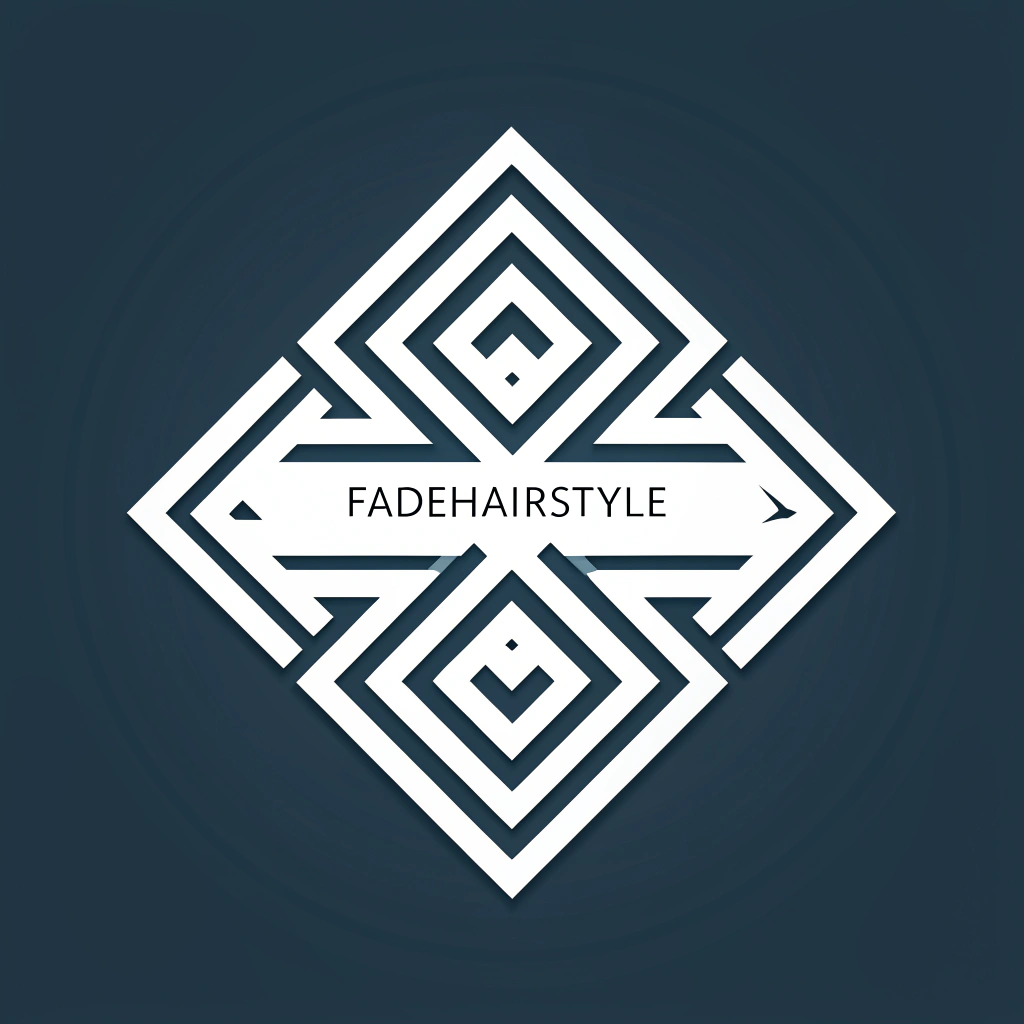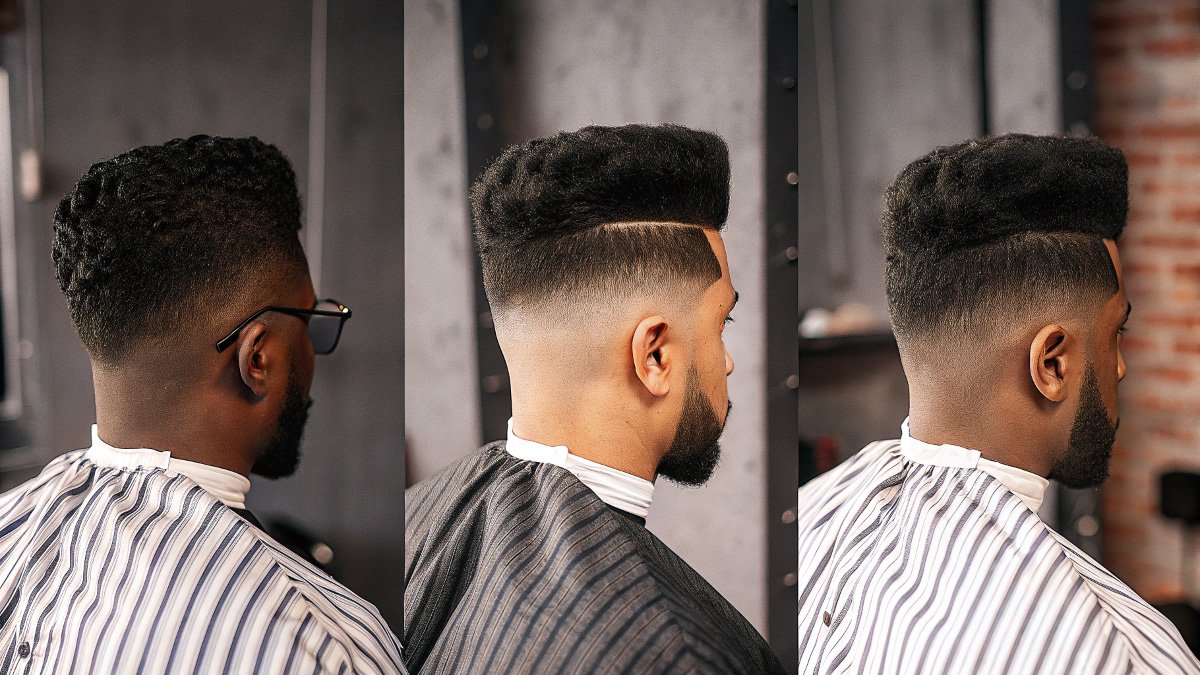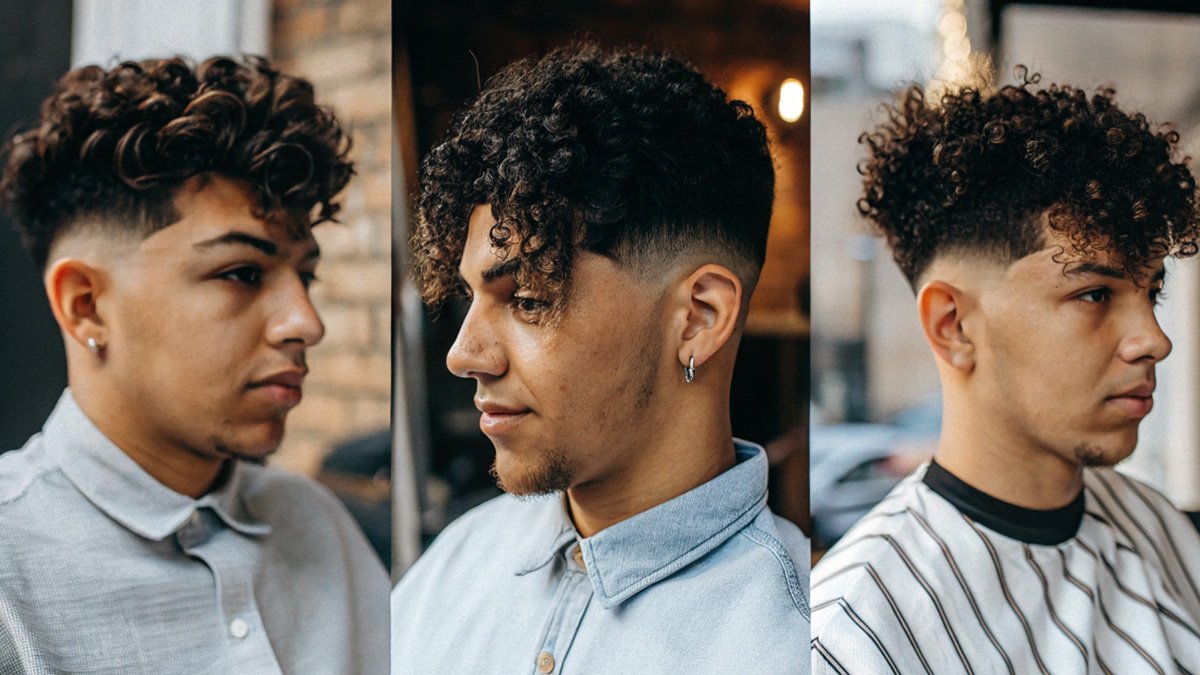A skin fade cuts hair progressively shorter from top to bottom. The shortest section reveals bare scalp. Barbers use electric clippers with different length guards. Each guard creates a specific hair length. The transition appears smooth between lengths.
This haircut works on all hair textures. Straight hair shows clean lines. Curly hair creates interesting texture contrasts. Thick hair appears fuller on top. Thin hair gains volume through contrast.
Professional barbers master this technique through practice. They understand hair growth patterns. Each person’s hair grows differently. Growth direction affects the final result.
Essential Skin Fade Variations
High Skin Fade Details
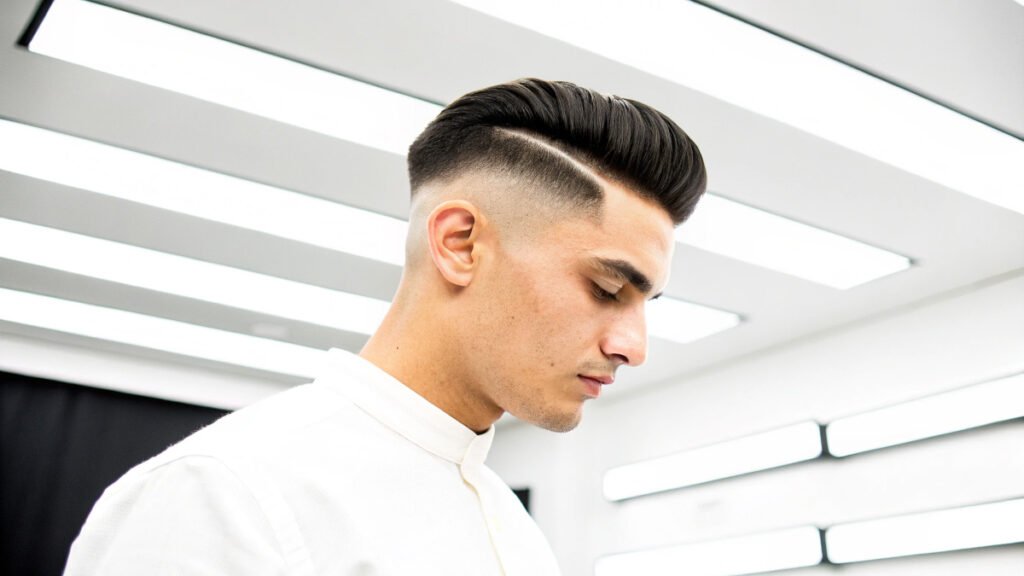
High fades begin near the temples. The transition starts two inches above the ears. This creates maximum contrast between top and sides. The exposed skin area appears larger.
Maintenance requirements increase with high fades. Hair growth becomes visible quickly. Most clients return within two weeks. The dramatic look suits confident personalities.
High fades work best with shorter top styles. Buzz cuts complement this variation. Textured crops also pair well. Long tops can create imbalance.
Mid-Level Fade Specifications
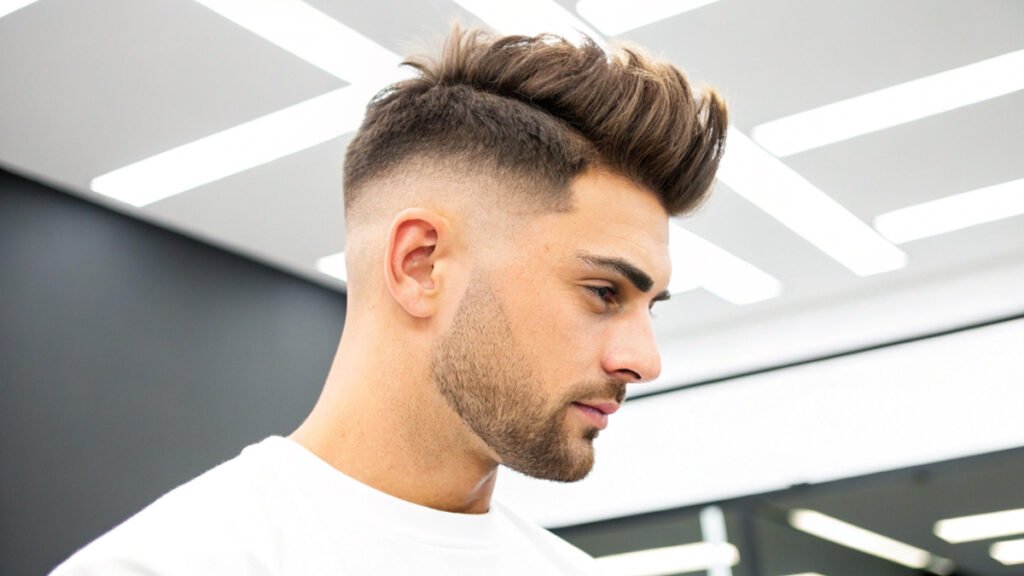
Mid fades start at ear level. This placement suits most face shapes. The balance feels natural. Growth patterns work favorably here.
First-time fade clients prefer this option. The look appears professional. Office environments accept this style. Social situations welcome the appearance.
Mid fades blend with various top lengths. Short crops work excellently. Medium lengths create good proportions. Styling options remain flexible.
Low Skin Fade Characteristics
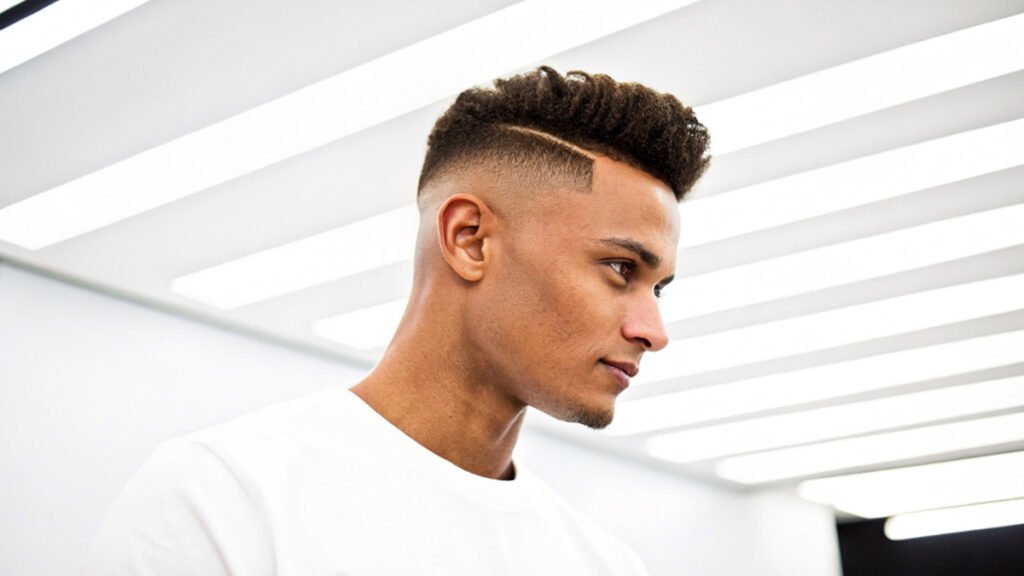
Low fades begin near the neckline. Subtlety defines this variation. Conservative environments appreciate the understated look. Professional settings welcome this choice.
Hair growth appears less obvious. Touch-up appointments can wait longer. Three-week intervals often suffice. Cost savings accumulate over time.
Long top styles complement low fades perfectly. Man buns work well. Slicked-back looks appear sophisticated. Natural textures maintain elegance.
Advanced Fade Techniques
Drop Fade Innovation
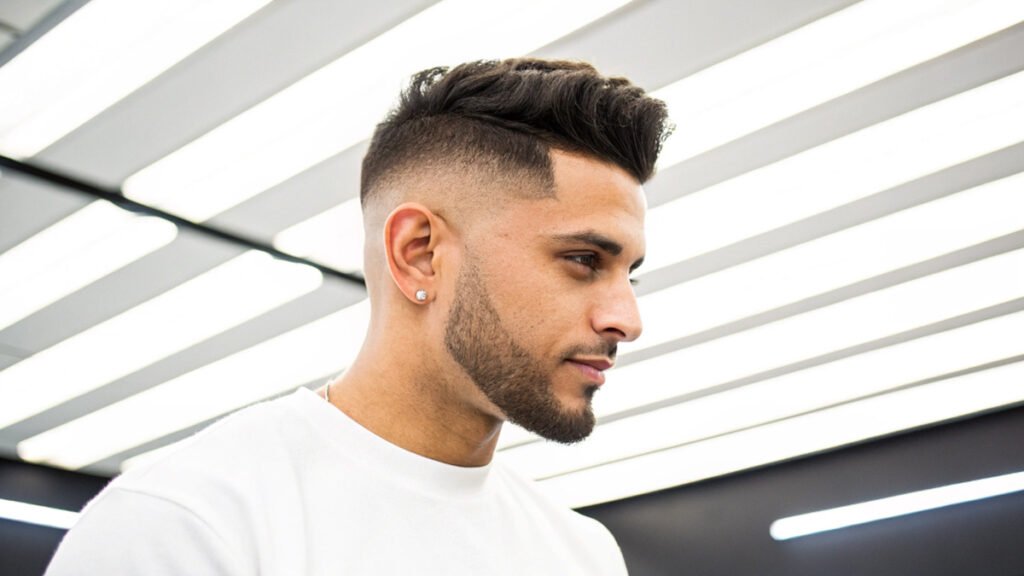
Drop fades follow curved lines. The curve drops behind each ear. This creates unique visual interest. The shape flatters most head forms.
Modern barbers prefer this technique. Clients request drop fades frequently. The style photographs well. Social media popularity drives demand.
Longer top styles benefit from drop fades. The curve frames facial features. Beard combinations work excellently. Overall harmony improves significantly.
Burst Fade Mechanics
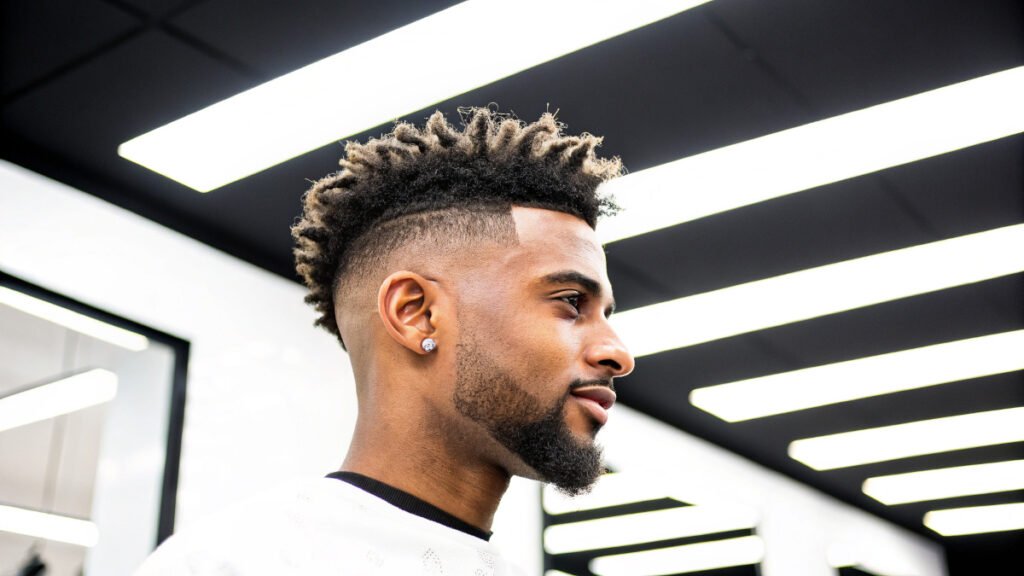
Burst fades radiate from behind ears. The pattern resembles a sunburst. Urban barbershops popularized this style. Creative clients choose burst variations.
Mohawk styles pair perfectly with burst fades. The contrast appears striking. Attention focuses on the design. Individual expression shines through.
Maintenance complexity increases with burst fades. Precise line work requires skill. Regular appointments become essential. Cost considerations multiply accordingly.
Temple Fade Execution
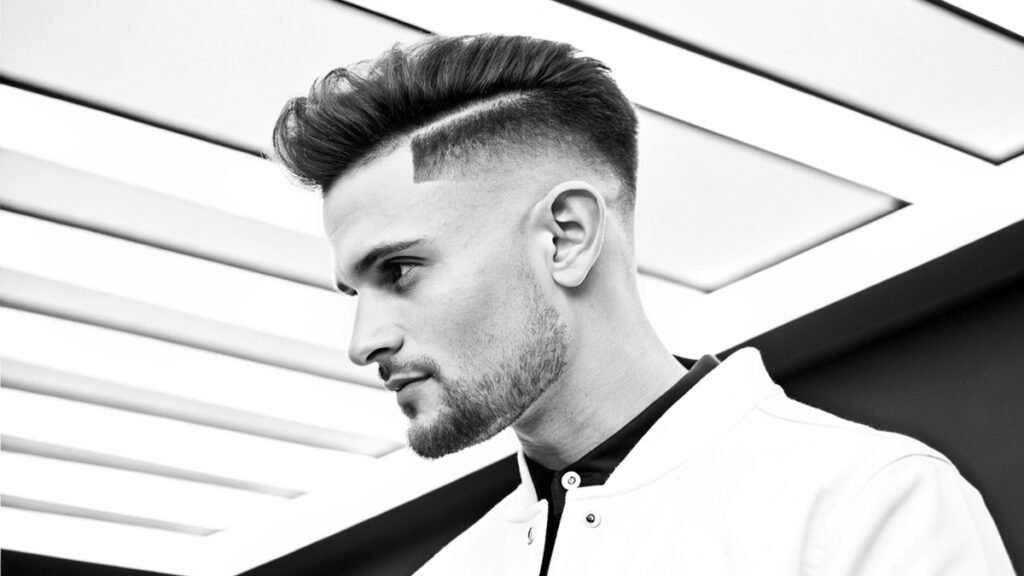
Temple fades focus on front areas. Back sections maintain more length. Brooklyn neighborhoods originated this style. Cultural significance runs deep.
This variation suits professional environments. The back length appears conservative. Front sections show modern styling. Balance pleases multiple audiences.
Hair growth affects temple fades differently. Front sections need frequent attention. Back areas can wait longer. Maintenance schedules require planning.
Technical Execution Process
Initial Consultation Steps
Skilled barbers examine hair growth patterns first. They identify cowlicks and natural directions. Growth speed varies between clients. Previous haircut history matters significantly.
Face shape analysis determines optimal fade placement. Round faces benefit from height. Long faces need width. Square faces require softening. Heart-shaped faces need balance.
Lifestyle factors influence technique selection. Active clients need low-maintenance options. Professional requirements limit dramatic choices. Budget constraints affect visit frequency.
Clipper Technique Breakdown
Barbers start with longer guards. Size four guards begin most fades. Gradual reduction creates smooth transitions. Size three follows size four naturally.
Multiple passes ensure evenness. Each pass removes specific amounts. Cross-cutting eliminates lines. Upward strokes blend lengths smoothly.
Final passes use zero guards. Foil shavers create skin-level finishes. Precision matters most here. Steady hands prevent mishaps.
Blending Mastery Methods
Clipper-over-comb techniques refine transitions. This method controls length precisely. Small sections receive individual attention. Perfection requires patience and skill.
Point-cutting adds texture naturally. Scissors create graduated effects. Sharp tools produce clean results. Dull blades cause damage.
Visual checking from multiple angles ensures quality. Barbers examine their work constantly. Lighting conditions affect perception. Final inspection happens under bright lights.
Maintenance Scheduling Systems
Weekly Care Routines
Daily washing keeps scalps healthy. Gentle shampoos prevent irritation. Over-washing strips natural oils. Balance maintains optimal conditions.
Moisturizing prevents flakiness. Lightweight lotions work best. Heavy products clog pores. Natural ingredients minimize reactions.
Sleep on silk pillowcases when possible. Cotton creates friction. Friction disturbs hair patterns. Smooth surfaces preserve styles longer.
Professional Touch-Up Timing
High fades require attention every ten days. Growth shows quickly here. Professional appearance demands precision. Regular appointments maintain standards.
Mid fades can wait two weeks. Growth appears gradual. Most clients maintain this schedule. Cost remains manageable.
Low fades stretch to three weeks. Subtle growth goes unnoticed. Budget-conscious clients prefer this timing. Quality remains acceptable longer.
Seasonal Adjustment Strategies
Summer heat affects growth rates. Hair grows faster in warm weather. Shorter intervals become necessary. Scalp exposure requires sun protection.
Winter conditions slow growth slightly. Longer intervals work better. Dry air affects scalp health. Moisturizing becomes more important.
Holiday schedules affect appointments. Plan ahead for busy periods. Book appointments early. Barber availability decreases during holidays.
Styling Product Recommendations
Hold Products for Different Lengths
Short tops need strong-hold products. Wax provides excellent control. Clay offers matte finishes. Gel creates wet looks.
Medium lengths require flexible products. Creams allow movement. Light waxes maintain shape. Mousses add volume naturally.
Long tops benefit from lightweight options. Oils add shine without weight. Serums smooth textures. Sprays provide light hold.
Application Techniques
Damp hair accepts products better. Towel-dry thoroughly first. Excess water dilutes effectiveness. Even distribution matters most.
Start with small amounts. Add more if needed. Too much product weighs hair down. Less always works better initially.
Work products through completely. Use fingers for distribution. Combs create even coverage. Brushes smooth surfaces.
Product Longevity Tips
Quality products last longer. Initial cost seems higher. Performance justifies expense. Cheap options require more product.
Store products properly. Cool, dry places work best. Heat degrades formulations. Sunlight affects consistency.
Replace products seasonally. Formulations lose effectiveness over time. Fresh products perform better. Regular replacement maintains results.
Face Shape Compatibility Analysis
Round Face Optimization
Height creates length illusion. High fades work excellently. Volume on top adds vertical lines. Side parts break roundness.
Avoid wide styles. Horizontal lines emphasize roundness. Keep sides clean. Focus attention upward consistently.
Beard combinations can help. Vertical growth adds length. Shape beards carefully. Professional advice improves results.
Square Face Softening
Soften harsh angles naturally. Mid fades work perfectly. Avoid sharp lines. Graduated transitions appear better.
Textured tops reduce severity. Messy styles break rigidity. Natural movement adds softness. Rigid styles emphasize angles.
Side-swept styles help significantly. Diagonal lines soften squares. Straight-across parts emphasize width. Asymmetry creates interest.
Long Face Balancing
Add width where possible. Low fades maintain side volume. High fades elongate further. Horizontal lines help significantly.
Fuller sides work better. Some length reduces length appearance. Completely bare sides emphasize length. Strategic planning helps.
Facial hair additions help. Horizontal growth patterns work. Full beards add width. Mustaches break vertical lines.
Cost Considerations and Budgeting
Initial Investment Requirements
Quality barbers charge premium prices. Skill commands higher rates. Experience justifies costs. Location affects pricing significantly.
First visits often cost more. Consultation time increases prices. Technique selection requires discussion. Complex styles demand expertise.
Tool quality affects results. Professional equipment costs more. Home attempts usually fail. Investment pays off long-term.
Ongoing Maintenance Costs
Frequent visits accumulate expenses. High fades cost more annually. Low fades reduce yearly spending. Budget planning helps significantly.
Tip expectations vary by location. Quality service deserves recognition. Regular clients receive priority. Relationships matter in barbering.
Product costs add up quickly. Professional products cost more. Quality justifies higher prices. Bulk purchases reduce costs.
Money-Saving Strategies
Build relationships with barbers. Regular clients receive discounts. Loyalty programs exist. Word-of-mouth referrals help.
Schedule during slow periods. Weekday appointments cost less. Holiday surcharges increase prices. Timing affects total costs.
Learn basic maintenance techniques. Minor touch-ups save money. Edge-up skills help. Professional work remains essential.
Troubleshooting Common Issues
Uneven Growth Patterns
Cowlicks affect fade appearance. Growth directions vary naturally. Professional techniques compensate. Regular maintenance helps significantly.
Some areas grow faster. Individual variation exists. Scheduling adjusts accordingly. Barber experience recognizes patterns.
Previous damage affects growth. Chemical treatments change textures. Heat damage alters patterns. Recovery takes time.
Skin Irritation Management
Sensitive scalps react differently. Gentle products help. Alcohol-free options work better. Natural ingredients reduce reactions.
Razor burn appears occasionally. Proper aftercare helps. Cooling products soothe skin. Prevention works better than treatment.
Ingrown hairs can develop. Exfoliation prevents problems. Regular brushing helps. Professional advice resolves issues.
Style Adjustment Needs
Personal preferences change. Style modifications work. Complete changes require planning. Growth periods allow transitions.
Professional requirements shift. Conservative options exist. Gradual changes work better. Sudden changes can shock.
Seasonal adjustments help. Summer requires different approaches. Winter changes needs. Climate affects choices significantly.
Future Trends and Evolution
Modern technology improves techniques. New tools create better results. Training methods advance constantly. Innovation drives improvement.
Social media influences styles. Popular variations spread quickly. Individual expression increases. Creative options multiply regularly.
Cultural influences shape preferences. Different communities prefer specific styles. Regional variations exist. Diversity enriches options.
Environmental consciousness affects choices. Sustainable products gain popularity. Eco-friendly salons increase. Responsible choices matter more.
Health awareness drives decisions. Scalp health receives attention. Natural products gain favor. Wellness integration continues growing.
Final Recommendations
Research barbers thoroughly before appointments. Portfolio reviews reveal skills. Client testimonials provide insights. Experience levels vary significantly.
Communicate clearly about expectations. Bring reference photos. Discuss maintenance requirements. Budget considerations matter.
Patience helps during growing phases. Transitions take time. Temporary awkwardness occurs. Final results justify patience.
Quality investments pay dividends. Skilled barbers produce better results. Premium products perform better. Long-term thinking helps.
Personal style evolves naturally. Experimentation teaches preferences. Professional guidance prevents mistakes. Confidence builds through experience.
